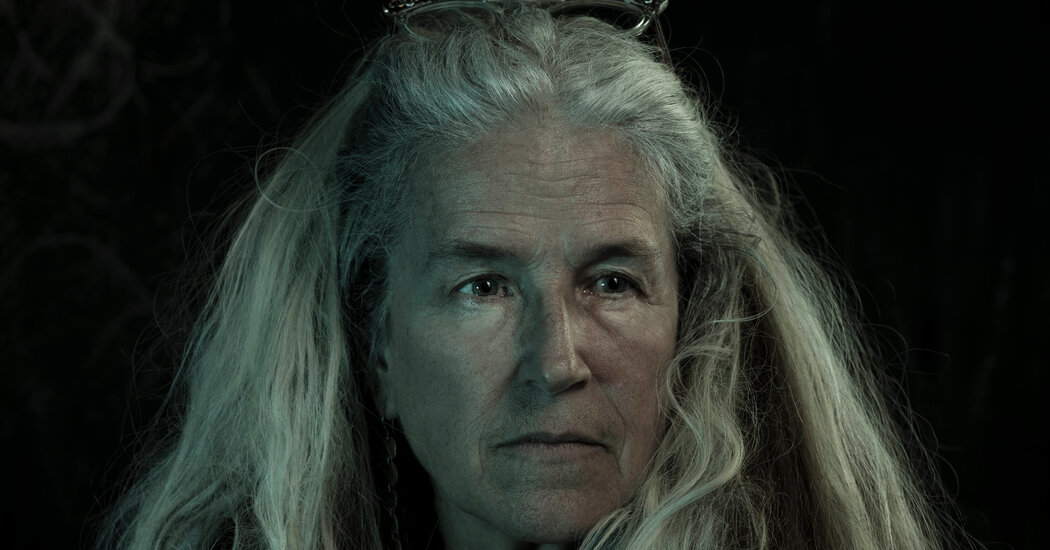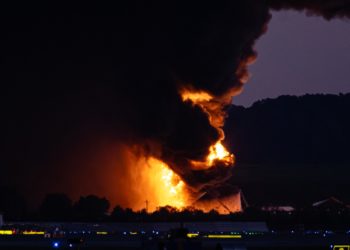Sara Terry, a photographer who captured the effects of war on people and landscapes, documenting the traumatic aftermath of conflicts in places like Bosnia and Sierra Leone, died on Oct. 13 at her home in Los Angeles. She was 70.
Her death was announced by The VII Foundation, an organization to which she belonged that promotes and teaches photography. Allison Terry, Ms. Terry’s niece, did not provide a cause, saying only that she died after a short illness.
Ms. Terry went to places after the firing had stopped. She shunned traditional conflict photography, trying instead to capture lingering traces of strife — sometimes in the faces of those who survived it and sometimes by photographing the haunted places war had passed through.
Her images are made up of hints and suggestions, forcing those who view them to construe their meaning. Ms. Terry’s work was exhibited at the United Nations and the Fotomuseum Antwerp in Belgium, among other places, and is in the permanent collection of the Museum of Fine Arts in Houston.
In Sierra Leone, Ms. Terry captured fragmented images of a former child soldier in that country’s brutal civil war of the 1990s who had been abducted by rebels who raped her and forced her into killing. The girl’s shadowy figure — Ms. Terry chose not to photograph her face — is an unspoken commentary on a shattered life.
A broken plastic chair in that same country, balanced precariously on a moldy cinder-block wall topped with barbed wire, evoked the conflict’s deadliness.
In Bosnia, a sorrowful woman in a white head scarf — is she in mourning? — raises her hand in a gesture, perhaps, of resignation. The figures of two bent-over women in the background — are they looking at graves? — reinforce the ambiguity about what, exactly, is happening. The sense of grief, though, is clear.
“Just because the guns stop doesn’t mean there’s peace,” Ms. Terry said in a TEDx talk in 2013, a year after she won a Guggenheim fellowship. In 2007 she founded the Aftermath Project, a nonprofit that awards grants to photographers, inspired by her belief that “war is only half the story.”
It was the other half she sought to document, first in Bosnia after the war there ended in 1995. That led to her 2005 photojournalism book, “Aftermath: Bosnia’s Long Road to Peace.”
Ms. Terry’s capacity for sympathizing with her subjects and their suffering made her stand out, in the view of her colleagues. “She had a keen sense for protecting people,” the photographer Ed Kashi said in an interview.
Her work, Mr. Kashi added, was about “going deep, making sure she was retaining the dignity of her subject.”
In a sequence she shot with the child soldier in Sierra Leone, she gave the girl the camera, allowing her to photograph places meaningful to her. A powerful image of a hole was a reminder of the site where the girl had helped bury a woman alive.
Another sequence with a double amputee named Tamba Ngaujah — the rebels chopped off the limbs of their opponents — followed him on his daily rounds. But there was no pity in the images, only an evocation of Mr. Ngaujah struggling to remain a functioning human being.
“When she would go visit these people, she listened to them,” the photographer Maggie Steber said in an interview. “Sometimes we go in with an agenda. She let them tell her their story, and she would just listen. She got very deep because of that.”
In 2011, Ms. Terry made a documentary film, “Fambul Tok,” about the postwar reconciliation process in Sierra Leone. The movie, whose title is Creole for “family talk,” earned strong reviews.
Noting an on-camera interview with a man who beheaded more than a dozen in his community, The Hollywood Reporter wrote that Ms. Terry “captures the rifts violence caused in these tightly knit villages and conveys how essential moving on is to everyone involved, not just emotionally, but in terms of survival.”
Ms. Terry came to photography relatively late in her career, after spending the late 1970s and 1980s as a print reporter for The Christian Science Monitor, covering stories in the United States and abroad. She was an author of a 1987 series of articles for The Monitor, “Children in Darkness,” which chronicled the exploitation of children as soldiers and laborers around the world.
“I lost my faith in words in the mid-’90s and I picked up a camera,” she said in her 2013 talk. “I moved from being a strict journalist to being a storyteller.”
Sara Terry, the younger of two children, was born on May 30, 1955, in Lansing, Mich., and grew up in San Pedro, Calif. Her father, LeGrand Terry, was an aerospace engineer, and her mother, Margaret (Swan) Terry, managed the home.
She graduated in 1977 from California State University, Long Beach, with a bachelor’s degree in journalism. After her years at The Monitor, she was a freelance writer for The New York Times Magazine, Rolling Stone and other publications.
In 2021, she produced “A Decent Home,” a film documentary showing what she called “the wealth gap through mobile home parks and the wealthy investors buying them up.” In her review in The Guardian, Lauren Mechling praised the film, which aired on PBS, as “unflinchingly intimate and troubling.”
Ms. Terry is survived by her older brother, Tim.
To colleagues, Ms. Terry was a journalist-turned- activist who came to believe that her work could and should strengthen the connectedness of humanity.
“I wanted to shake people by the shoulders and say, ‘How can you ignore this place?’” Ms. Terry told The Monitor in 2010 about her work in Bosnia. “‘How can you not be connected and just walk on to the next crisis spot?’”
Adam Nossiter has been bureau chief in Kabul, Paris, West Africa and New Orleans, and is now a Domestic Correspondent on the Obituaries desk.
The post Sara Terry, Photographer Who Captured War’s Aftermath, Dies at 70 appeared first on New York Times.




